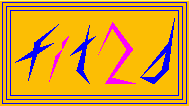Software

FIT2D
FIT2D is a general purpose 1 and 2 dimensional data analysis program. It is used for both interactive and "batch" data processing, and is used for different purposes. Calibration and correction of detector distortions is one of the main uses of FIT2D. Difficult data analysis problems may be tackled using fitting of user specified models. To enable model fitting to be performed on a wide variety of input data, many other more basic data analysis operations are also available. A wide variety of performant graphical display methods are available.

Pore3D
Pore3D is a software toolbox for quantitative analysis of three-dimensional images. The core of Pore3D consists in a set of state-of-the-art functions and procedures for performing filtering, segmentation, skeletonization and quantitative analysis of three-dimensional data. Although three-dimensional data can be produced by several techniques (for instance: magnetic resonance, x-ray scattering or confocal microscopy), the library was developed and optimized for micro-CT (Computed Tomography) data. Pore3D features are available through the high-level scripting environment IDL. Pore3D has been tested with IDL 64-bit from versions 6.4 to 8.5.
Ptychography Alignment Tools
This project provides a PyQtGraph-based GUI to assist users on the alignment of Ptychography scans. The tool has the following features: -Load set of images (tiff files supported) -Select pairs of images for alignment -Import/Export probe positions (npy array) -Image controls: levels, contrast, look up tables, zooming, translation -Preview the global picture by combining all positions
PyHST2
Hybrid distributed code for high speed tomographic reconstruction with iterative reconstruction and a priori knowledge capabilities. PyHST2 (formerly known as PyHST) has been engineered to sustain the high data flow typical of the third generation synchrotron facilities (10 terabytes per experiment) by adopting a distributed and pipelined architecture. The code implements, beside a default filtered backprojection reconstruction, iterative reconstruction techniques with a-priori knowledge. The latter are used to improve the reconstruction quality or in order to reduce the required data volume and reach a given quality goal. The implemented a-priori knowledge techniques are based on the total variation penalisation and a new recently found convex functional which is based on overlapping patches.
SYRMEP Tomo Project (STP)
SYRMEP Tomo Project (STP) has been developed for the users of the SYRMEP beamline of the Elettra synchrotron facility (http://www.elettra.eu) to perform the digital image processing required by parallel beam propagation-based phase contrast CT experiments. The underlying idea is to let users perform post-beamtime optimization, fine tuning and/or additional tests with common hardware at their home institution. The software has been also developed for teaching and educational purposes. SYRMEP Tomo Project is available only for Windows 64-bit machines.
- ← Previous
- 1
- Next →

